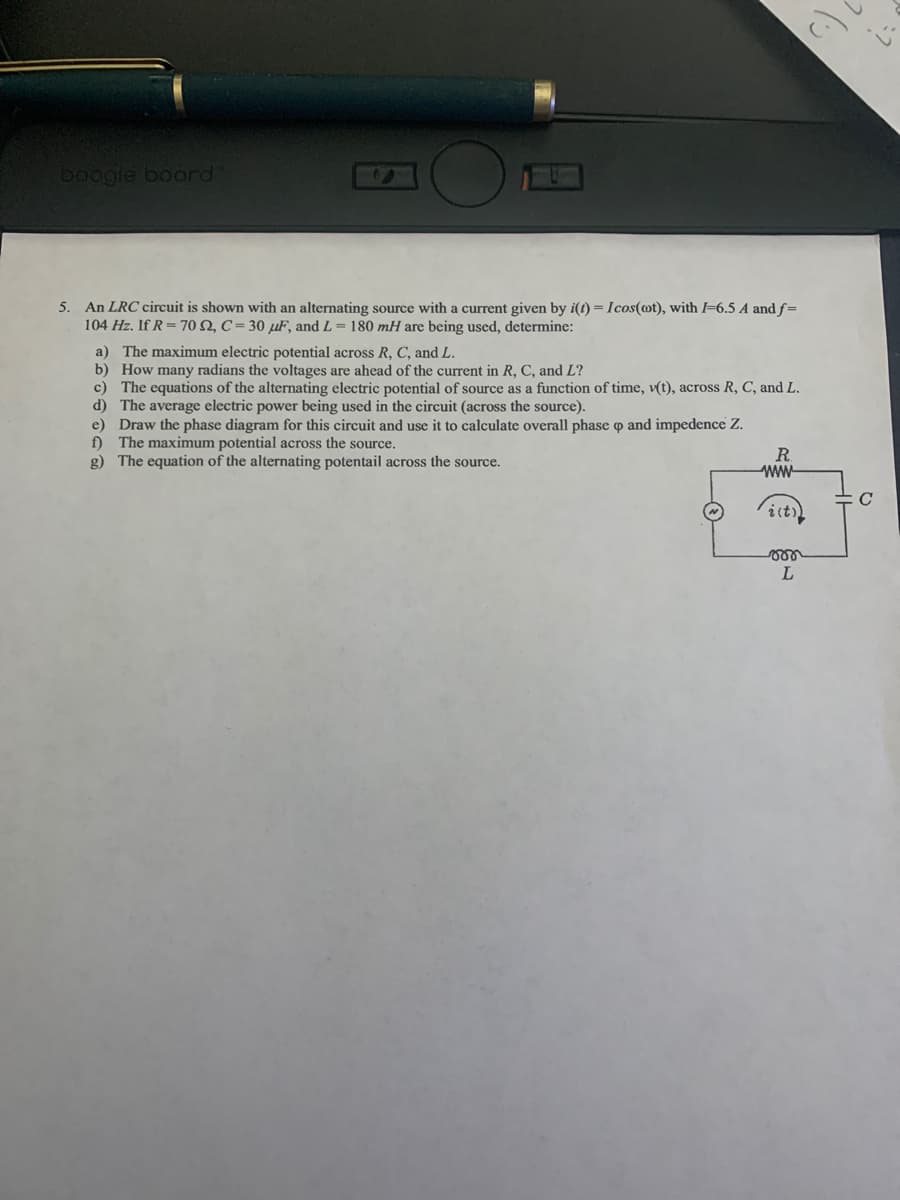5. An LRC circuit is shown with an alternating source with a current given by i(t) = Icos(@t), with -6.5 A and f= 104 Hz. If R-70 N, C - 30 µF, and L 180 mH are being used, determine: %3D a) The maximum electric potential across R, C, and L. b) How many radians the voltages are ahead of the current in R, C, and L? c) The equations of the alternating electric potential of source as a function of time, v(t), across R, C, and L.
5. An LRC circuit is shown with an alternating source with a current given by i(t) = Icos(@t), with -6.5 A and f= 104 Hz. If R-70 N, C - 30 µF, and L 180 mH are being used, determine: %3D a) The maximum electric potential across R, C, and L. b) How many radians the voltages are ahead of the current in R, C, and L? c) The equations of the alternating electric potential of source as a function of time, v(t), across R, C, and L.
Related questions
Question
Pp# 5: can you help me solve and understand this practice problem please(d-f)? A step by step explanation would be appreciated. Thank you!

Transcribed Image Text:boogle board
5. An LRC circuit is shown with an alternating source with a current given by i(t) = Icos(ot), with =6.5 A and f=
104 Hz. If R= 70 N, C= 30 µF, and L = 180 mH are being used, determine:
a) The maximum electric potential across R, C, and L.
b) How many radians the voltages are ahead of the current in R, C, and L?
c) The equations of the alternating electric potential of source as a function of time, v(t), across R, C, and L.
d) The average electric power being used in the circuit (across the source).
e) Draw the phase diagram for this circuit and use it to calculate overall phase o and impedence Z.
f)
The maximum potential across the source.
The equation of the alternating potentail across the
R.
ww-
urce.
it)
Expert Solution
This question has been solved!
Explore an expertly crafted, step-by-step solution for a thorough understanding of key concepts.
Step by step
Solved in 6 steps
